Impressions of the Precolonial Philippines – Gold Everywhere!
Inspired by the post of @juvyjabian — "The Influence of Spanish Colonization in the Philippines" — I want to share a few impressions of how it might have been in the Philippines in pre-colonial times. Unfortunately, many people, including pinoys themselves, nowadays still think that the Philippines were mainly inhabited by a bunch of illiterate spear-throwing islanders who had no "culture" until the Spaniards came along. Of course throwing spears was a thing back then in many regions of the world, but still there’s a lot more to the Philippine heritage. Maybe I'll make more parts, as I kinda enjoy reading through the old records of the first visitors.
Gold, Gold, Gold — Gold everywhere
"Pieces of gold, of the size of walnuts and eggs are found by sifting the earth in the island of that king who came to our ships. All the dishes of that king are of gold and also some portion of his house, as we were told by that king himself." — Antonio Pigafetta, Source
"...the ore is so rich that I will not write any more about it, as I might possibly come under a suspicion of exaggerating; but I swear by Christ that there is more gold on this island than there is iron in all Biscay." — Hernando Riquel, Source
"There are some chiefs in this island who have on their persons ten or twelve thousand ducats' worth of gold in jewels —to say nothing of the lands, slaves, and mines that they own. There are so many of these chiefs that they are innumerable. Likewise the individual subjects of these chiefs have a great quantity of the said jewels of gold, which they wear on their persons — bracelets, chains, and earrings of solid gold, daggers of gold, and other very rich trinkets. These are generally seen among them, and not only the chiefs and freemen have plenty of these jewels, but even slaves possess and wear golden trinkets upon their persons, openly and freely." — Guido de Lavezaris, Source
Keep in mind that the Philippines weren't a "unified zone" back then but inhabited by numerous different tribes, so whenever one of the early Spaniards wrote something about the people he encountered, this doesn't mean that his impressions would have applied to everyone of that archipelago. Nonetheless they all agreed that there was an abundance of gold:
"More or less gold is found in all these islands; it is obtained from the rivers, and, in some places, from the mines, which the natives work. However, they do not work the mines steadily, but only when forced by necessity; for because of their sloth and the little work done by their slaves, they do not even try to become wealthy, nor do they care to accumulate riches." — Guido de Lavezaris, Source
In fact there was such an abundance of it, that similar to how the people from Iceland have over a dozen words for varieties of snow — the thing they have an abundance of — the people of the Philippines too had a complex vocabulary for gold:
Dudulangan — mine; the mining of metal
Hirapo — gold of highest carat
Dalisay — gold of “muy fino de quilates” (very high carat)
Panica — gold of high carat
Harom — dark gold or gold of lower carat
Gasak — inferior kind of gold, brittle gold
Bisig — gold with so many impurities
Hinolog — gold containing many impurities
Malamote — gold mixed with too much silver
Apis — separating gold from grit or dirt
Bare — to barter two tael of inferior gold with one tael of fine gold
Tamas — refining of gold
Gangob — purify or refine gold in a forge
Babasingan — weighing scale for taels of gold
Sangbasing na bulawan — a tael of gold
From Marcos de Lisboa's "Vocabulario de la lengua Bicol" (Source; Original Source), but there were also other terminology systems across the islands; a few others can be found here.
"According to colonial accounts, the Filipinos were so knowledgeable about gold that even children could accurately determine the purity of gold alloys," Newsweek says, also mentioning "a sophisticated vocabulary for gold", referring to the "16th-century Tagalog-language dictionary collated by Pedro de San Buenaventura".
The Boxer Codex from c. 1590 contains a few illustrations of what the Spaniards saw at the time of their initial contact. Click on the image to view in full size on Wikipedia.
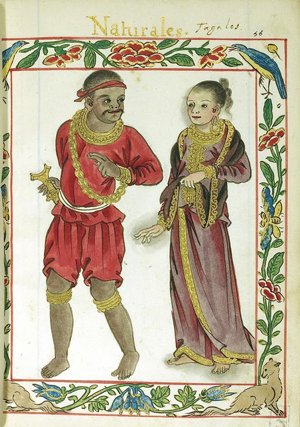
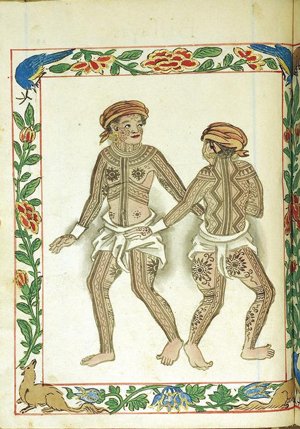
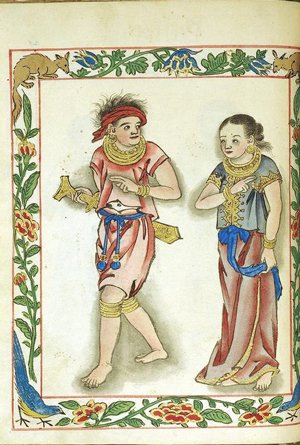
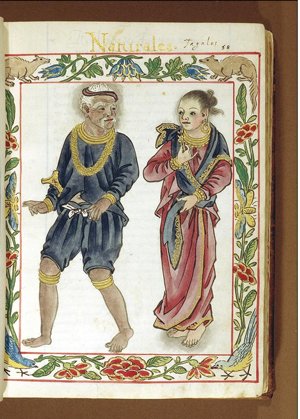
The Filipinos had so much gold, some of them even decorated their teeth with it.
"Among the influential people, especially the women, it was the custom to set some of the teeth most skilfully with gold which could not fall out, and gave a beautiful appearance." — Francisco Colin, Source
"They cover the teeth with a black, glossy polish, or one that is flame-colored; and thus their teeth become black, or as red as vermilion. In the upper row, they make a little covering which they fill with gold, which shows off to advantage on the black or red background of that polish." — Hieronimo de Bañuelos y Carrillo, Source
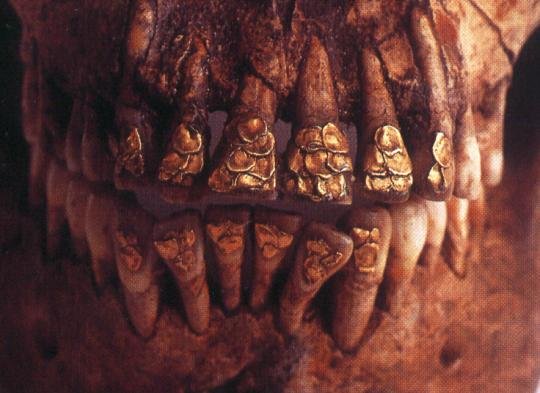
Gold was also among their funerary goods.
They had funerary masks similar to the customs that are known of the Egypts and Aztecs.
"They bury with the dead gold, cloth, and other valuable objects — saying that if they depart rich they will be well received in the other world, but coldly if they go poor." — Miguel de Loarca, Source
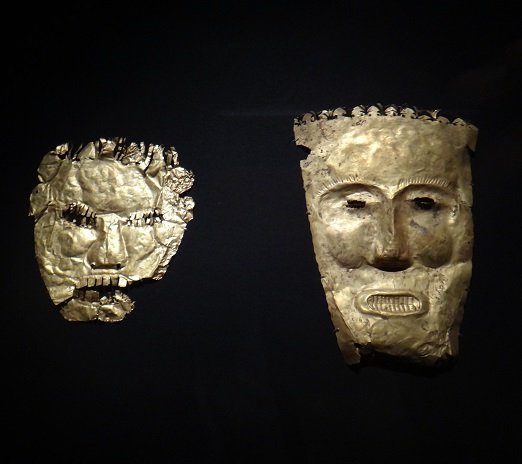
It's hardly surprising that the earliest known written document found in the Philippines, the Laguna Copperplate Inscription, also mentions gold. It is basically a receipt acknowledging that it releases the bearers, the children of "Namwaran", from a debt in gold amounting to 1 kati and 8 suwarnas (Source). Which is about 865 grams of gold, worth 36.552,55 USD or 32.685,88 EUR today. Back then, if you couldn't pay a debt, you would have to become a slave until it is payed off — not so much different from our times.

Aside from the statements of the earliest visitors, the artefacts of the Ayala Museum also provide a view on how abundant gold must have been, and how skillfull Filipinos handled it. Like this "sacred thread", a sash that is made of pure solid gold, that weighs more than 4 kg and and is estimated to be about 1, 000 years old. You can see a lady putting it on in this video.
.jpg)
Nice article @ninkhisibir, its true that Philippines has lots of gold, infact as history has told, 2 ships of gold were given to the United States with the help of Ferdinand Marcos because they need lots of them to secure their economy.
Thanks for mentioning me in your article. Kabayan!
Salamat! Thanks for the reblog :)